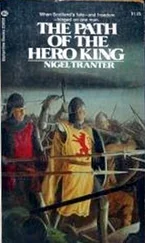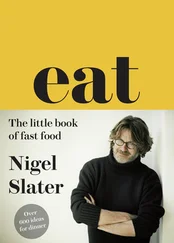1 ...8 9 10 12 13 14 ...23
Quick, mildly spiced beef
rapeseed oil
cubed beef (e.g. chuck steak): 500g
onions: 2 large
garlic: 3 cloves
ground cumin: 2 teaspoons
ground coriander: 2 teaspoons
garam masala: 1 tablespoon
vegetable or beef stock: 500ml
grain mustard: a tablespoon
double cream: 200ml
Warm a little oil in a heavy, shallow casserole. Season the beef with salt and black pepper, then colour on all sides in the oil, turning only occasionally. Remove from the pan with a draining spoon.
Meanwhile, halve, peel and thinly slice the onions. Peel and thinly slice the garlic. Add the onions and garlic to the pan, letting them soften a little but not brown beyond pale honey colour. Stir in the ground cumin, coriander and garam masala, then continue cooking for five minutes before returning the meat and any juices to the pan. Pour in the stock, bring to the boil and simmer for ten minutes, till the liquid has reduced by half.
Stir in the mustard, pour in the cream and bring to the boil. Check the seasoning and serve.
Enough for 4
Baked quince with orange and mascarpone ginger crunch
The quince once seemed so impenetrable. Mentions of membrillo and quince liqueur did nothing to invite entry to the rock-hard, yellow fruit that resembled a dumpy papaya. Ten years on, I take a deep casserole from the oven, the five fruits split, their soft, almost fluffy, pink flesh peeping through, and marvel at their beauty. There is orange in there too, vanilla in its sticky pod and a single cinnamon stick. The steam beguiles and amuses with its notes of amber, orange blossom and spice. The quince has come a long way in this kitchen. I guess we all have.
quinces: 4 large
oranges: 3
a cinnamon stick
a vanilla pod
For the mascarpone ginger crunch:
ginger biscuits: 75g
mascarpone: 200g
Set the oven at 200°C/Gas 6. Put the quinces in a deep casserole, piercing them here and there with a small knife or skewer as you go.
Halve and juice the oranges and pour into the casserole, add the cinnamon stick and vanilla pod and then cover with a lid. Bake for an hour or so, till the skins have wrinkled and the flesh is tender to the point of a knife.
For the ginger crunch, crush the biscuits, either in a plastic bag with a rolling pin or in a food processor, but not too finely. They should have a mixture of textures from gravel to coarse sand. Fold the biscuits into the mascarpone.
Remove the quinces from the juice, place on small plates and serve with the pan juices and the mascarpone ginger crunch.
Enough for 4
JANUARY 22
A potato crust for a fish pie…
I do love a fish pie, with its flaky, undulating pastry crust or deep, furrowed lid of mashed potatoes crisped in the oven. For an everyday fish pie, the sort I might make for a midweek supper, I take a shortcut with the crust, using breadcrumbs and herbs blitzed in the food processor or thin slices of potato. That way I get a crisp lid as a contrast to the softness underneath without having to make and roll pastry. When time is of less importance, at the weekend, say, I use a more traditional crust of butter and flour or potatoes whipped up with parsley and butter to contrast with the deep, creamy, piscine filling.
Which fish I use for a pie will change according to supply, whim and conscience. Fish is rarely a cheap eat, but we can trim the bill a little by choosing the less popular varieties such as ling and whiting and, if it is to our taste, coley (try as I might, I can’t find much excitement in a piece of coley). A sustainable alternative to the knee-jerk varieties is crucial and I have had much success with pollack and line-caught haddock. I’m getting used to gurnard too, a bit of an ugly bugger but with a reasonable flavour. A firm-textured fish once used as lobster bait and now appearing on menus everywhere, from Moro to Rick Stein’s restaurants in Padstow, the gurnard responded well to being baked with cream and basil. I introduced a potato top, neat slices laid one overlapping the next, a way of padding out a few fish fillets to make them go a bit further. It’s a sweet and gentle pie, without the stodge of one crowned with mashed potatoes (good though they can be). Something to serve with steamed purple sprouting broccoli or the salad that follows.
Gurnard, basil and potato pie
potatoes: 400g
a large onion
olive oil: 2 tablespoons
gurnard or similar white fish: 4 large fillets (about 450g), skinned
basil leaves: 15g
double cream: 250ml
butter
Peel the potatoes, slice them roughly the thickness of a pound coin, bring them to the boil in lightly salted water, then leave to cook at a gentle boil for five or six minutes. Drain and set aside. Set the oven at 200°C/Gas 6.
Peel and finely slice the onion, then let it cook in the oil in a shallow oven-proof pan for five to ten minutes, till it has softened but not coloured. Switch off the heat. Season the fish fillets with salt and black pepper, then place them on top of the onion. Shred the basil leaves and stir them into the cream with a light seasoning of salt. Pour the cream over the fish, then lay the sliced potatoes on top, neatly and slightly overlapping. Season and dot the surface with butter.
Bake for thirty to forty minutes, till the potatoes have lightly browned.
Enough for 2
…and the beauty of a winter salad
The crisp, winter leaves – trevise, radicchio, in fact all the chicories – have a beauty not present in the lush green leaves of summer. Their wayward curls, like tendrils of squid, the flashes of magenta, rose and blood-red on white as if they have been painted by hand, all lead us to want to use these leaves whole rather than chopped or torn. The shape of the leaves is as much a part of their attraction as their flavour, their dazzling colours only becoming clear and bright in cold weather. Just as importantly, there is a bitterness to the winter leaves that makes them a perfect match for the sweetness of walnuts, mild cheeses (the Gloucesters, the Beaufort family) and bacon.
I find something endearing about the fact that the sweeter leaves are those nearest the heart. The most bitter – and the ones I like the most – are the ones that grow on the outside. The more light they receive, the deeper their pungency. The intensely coloured, rabbit-eared raddichios are especially handsome on a white plate. The one that melts people’s hearts is the Castelfranco variety, with its cream, rough-edged leaves speckled with maroon and pink. It’s a rare find, but a showstopper on the plate, perhaps with slices of Russet apple.
I grow several varieties of winter lettuce in pots in the cold frame. They seem to sit there sulking, then take me by surprise by appearing as fist-sized whorls of beautiful, rose-tinted leaves with freckles of deepest burgundy. The cold spurs on their growth, just as it does the snowdrops and narcissi in the garden. There is the curiously waxy claytonia, sometimes known as winter purslane, landcress with its iron-rich flavour, buttery lamb’s lettuce, and all of them can be grown outdoors, even when there is frost on the ground. Sow in August and harvest all winter.
The dressings for winter salads are something I tend to introduce a touch of sweetness to, in the form of walnut oil or balsamic vinegar, as a knee-jerk contrast. Occasionally it is worth flying more dangerously and adding other pungent flavours – capers, gherkins, mustard and salty, palate-cleansing cheeses – to the leaves too. The shock of the bitter, the sour and the pungent, together with the crunch of the leaves, makes for refreshing, sense-awakening eating.
Winter leaves with gherkins and mustard
Читать дальше












